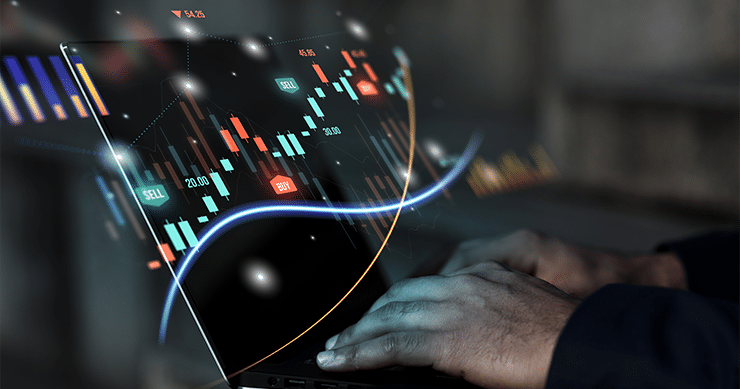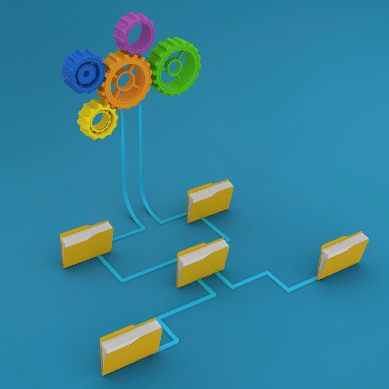Asset Risk Management in cybersecurity is identifying, assessing, and mitigating risks associated with an organization’s digital assets. These digital assets can include data, hardware, software, networks, and other resources that are vital to an organization’s operations. The primary goal of asset risk management is to protect these assets from various threats, such as cyberattacks, data breaches, and other security incidents, which can lead to financial losses, damage to the organization’s reputation, and legal consequences.

Key Components of Asset Risk Management:
Asset Identification
The first step is to identify and catalog all digital assets within the organization. This includes hardware assets like servers and workstations, software applications, data repositories, and network infrastructure.
Risk Assessment
Once the assets are identified, a risk assessment is conducted to evaluate the potential threats and vulnerabilities associated with each asset. This involves considering the asset’s value, its criticality to the organization’s operations, and its potential exposure to various risks.
Threat Analysis
A thorough analysis of the potential threats to the assets is conducted. This may involve considering external threats from cybercriminals, internal threats from employees, and other risks like natural disasters.
Vulnerability Assessment
An examination of the vulnerabilities in the organization’s assets is carried out. This includes assessing weaknesses in software, hardware, and configurations that could be exploited by attackers.
Risk Prioritization
After identifying threats and vulnerabilities, a quantitative or qualitative assessment of the risk is performed. This process involves assigning values or scores to the risks based on their potential impact and likelihood of occurrence.
Risk Mitigation
Strategies are developed to mitigate prioritized risks first. These strategies may include implementing security controls, applying patches and updates, creating security policies and procedures, and providing training and awareness programs for employees.
Start Getting Value With
Centraleyes for Free
See for yourself how the Centraleyes platform exceeds anything an old GRC
system does and eliminates the need for manual processes and spreadsheets
to give you immediate value and run a full risk assessment in less than 30 days
Risk Monitoring
Continual monitoring and assessment of the risk landscape is essential to stay up-to-date with emerging threats and vulnerabilities. This allows organizations to adjust their risk management strategies as needed.
Incident Response Planning
A critical aspect of asset risk management is having an incident response plan in place. This plan outlines the steps to be taken in the event of a security incident or breach and ensures that assets can be protected and restored quickly.
Compliance and Regulatory Considerations
Asset risk management must take into account relevant compliance requirements and regulations that apply to the organization’s industry. This ensures that the organization remains in legal and regulatory compliance while managing asset risks.
How To Prioritize Digital Asset Risks
Not all digital assets are created equal. The nature of critical assets and their vulnerability levels can vary widely across industries and organizations. Some digital assets are highly sensitive and prone to attacks, while others remain less critical. To add complexity, attackers can range from individuals to criminal syndicates and even governments, each with varying resources and motivations.
Categorizing Digital Asset Risk According to CIA
Let’s illustrate the categorizing of asset risks according to confidentiality, integrity, and availability.
| CATEGORY | HIGH-RISK ASSET | MEDIUM-RISK ASSET | LOW-RISK ASSET |
| CONFIDENTIALITY | High-Risk Asset: Assets contain highly sensitive data. A breach could lead to severe data exposure, compromising privacy and legal obligations. | Medium-Risk Asset: Assets contain moderately sensitive data. A breach could lead to significant data exposure but may not be as severe as high-risk assets. | Low-Risk Asset: Assets contain non-sensitive data with minimal data exposure risks. Confidentiality breaches have negligible consequences. |
| INTEGRITY | High-Risk Asset: Tampering with these assets could result in catastrophic consequences. This includes data manipulation or system alterations that have far-reaching impacts, causing severe damage. | Medium-Risk Asset: Tampering could lead to substantial damage, potentially affecting critical operations. While not as severe as high-risk assets, the impact is still significant. | Low-Risk Asset: Tampering with these assets is unlikely to cause substantial damage. Minor alterations may occur, but they are unlikely to affect operations or data integrity significantly. |
| AVAILABILITY | High-Risk Asset: Downtime of these assets poses significant operational risks. Extended downtime can result in severe disruptions to critical operations, causing major financial losses and damage. | Medium-Risk Asset: Downtime poses operational risks, but the impact is less severe than high-risk assets. Some financial losses and disruptions may occur, but they are manageable. | Low-Risk Asset: Downtime of these assets has minimal impact on operations. Any disruptions are limited and cause negligible financial losses. |
Summing it Up
Digital asset risk management ensures the protection of critical assets, which is why asset risk management strategies, including asset-liability management risk, are becoming increasingly important.
In an era of digital transformation, where businesses increasingly rely on digital assets, protecting all assets equally is no longer a feasible strategy. Instead, the focus should be on safeguarding the critical assets of paramount importance to the organization’s operations.
Digital resilience, a cross-functional strategy, provides an innovative approach to protecting vital digital assets. It involves identifying and assessing vulnerabilities, setting enterprise-wide goals, and devising the most effective means of achieving them. A key aspect of digital resilience is identifying and securing an organization’s “digital crown jewels,” which encompass data, systems, and software applications that are indispensable for daily operations.
Start Getting Value With
Centraleyes for Free
See for yourself how the Centraleyes platform exceeds anything an old GRC
system does and eliminates the need for manual processes and spreadsheets
to give you immediate value and run a full risk assessment in less than 30 days





